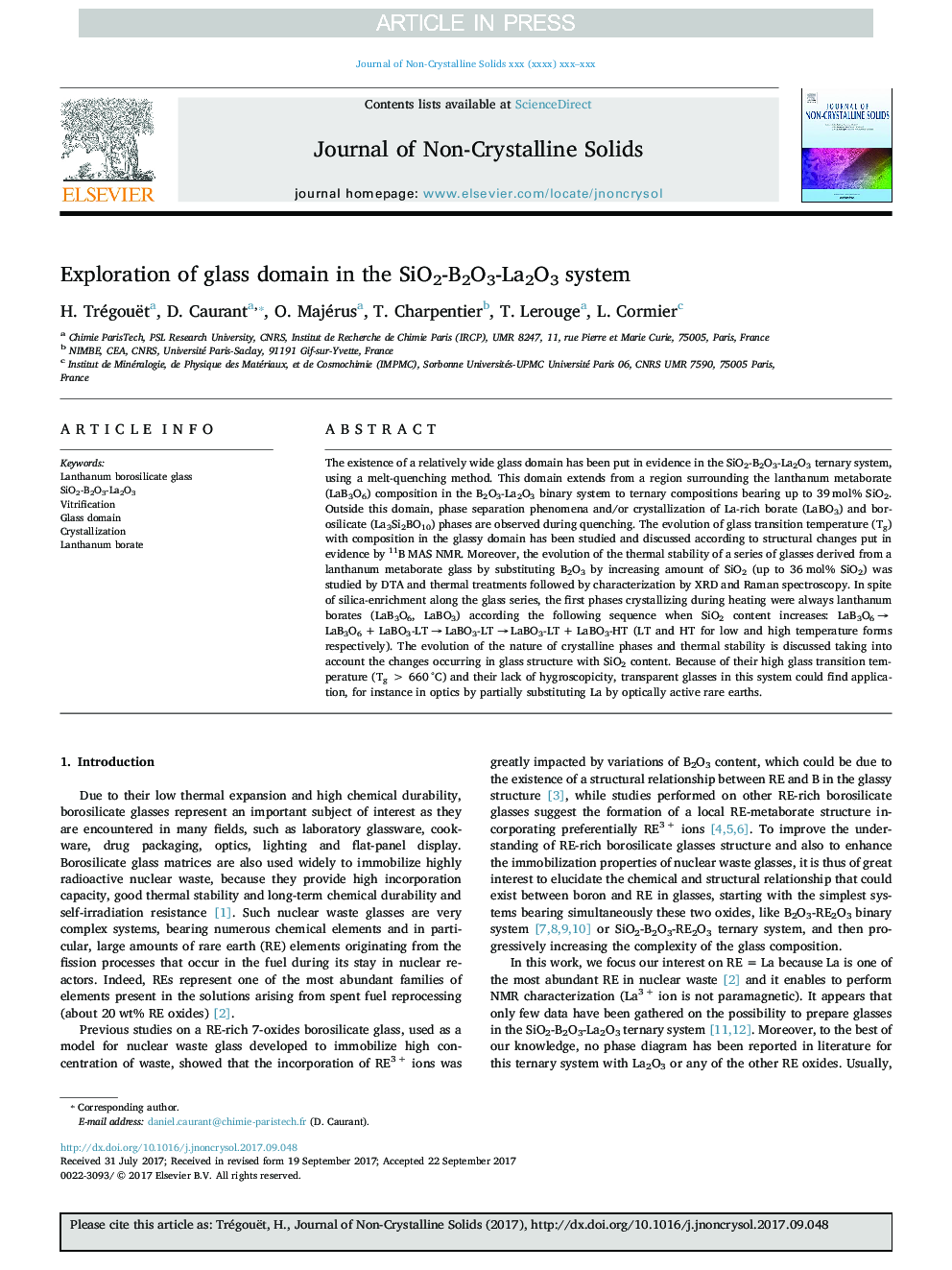| Article ID | Journal | Published Year | Pages | File Type |
|---|---|---|---|---|
| 5441002 | Journal of Non-Crystalline Solids | 2017 | 15 Pages |
Abstract
The existence of a relatively wide glass domain has been put in evidence in the SiO2-B2O3-La2O3 ternary system, using a melt-quenching method. This domain extends from a region surrounding the lanthanum metaborate (LaB3O6) composition in the B2O3-La2O3 binary system to ternary compositions bearing up to 39 mol% SiO2. Outside this domain, phase separation phenomena and/or crystallization of La-rich borate (LaBO3) and borosilicate (La3Si2BO10) phases are observed during quenching. The evolution of glass transition temperature (Tg) with composition in the glassy domain has been studied and discussed according to structural changes put in evidence by 11B MAS NMR. Moreover, the evolution of the thermal stability of a series of glasses derived from a lanthanum metaborate glass by substituting B2O3 by increasing amount of SiO2 (up to 36 mol% SiO2) was studied by DTA and thermal treatments followed by characterization by XRD and Raman spectroscopy. In spite of silica-enrichment along the glass series, the first phases crystallizing during heating were always lanthanum borates (LaB3O6, LaBO3) according the following sequence when SiO2 content increases: LaB3O6 â LaB3O6 + LaBO3-LT â LaBO3-LT â LaBO3-LT + LaBO3-HT (LT and HT for low and high temperature forms respectively). The evolution of the nature of crystalline phases and thermal stability is discussed taking into account the changes occurring in glass structure with SiO2 content. Because of their high glass transition temperature (Tg > 660 °C) and their lack of hygroscopicity, transparent glasses in this system could find application, for instance in optics by partially substituting La by optically active rare earths.
Related Topics
Physical Sciences and Engineering
Materials Science
Ceramics and Composites
Authors
H. Trégouët, D. Caurant, O. Majérus, T. Charpentier, T. Lerouge, L. Cormier,
